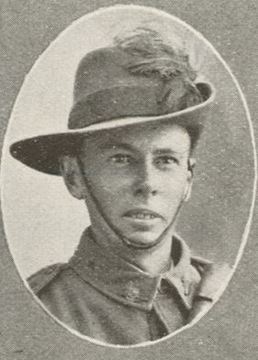The Hogarth family of “Balgownie”, Cambooya, had origins in Scotland and northern England. William Hogarth married Ann (Annie) Cunningham Robertson at St James Church in central Sydney in 1873. (Other sources have the wedding at Deepwater NSW.) William and Annie were both from Cumberland in the north-west of England, but William had strong ties across the border to the Hogarths of Firhill, Scotland. He was a cousin of Patrick Leslie, the original settler on the Darling Downs and the founder of the property “Canning Downs”. William studied at Marischal College in Aberdeen. He and Annie were both in their early thirties when they married and went on to own properties on the Darling Downs at Cambooya and residences in Toowoomba. They had ten children. William retained strong connections to the Hogarths of Firhill in Scotland and his alma mater Marischal College where several members of the family were educated, including his son Archibald (see below) who studied there in his early twenties. William died, an accidental drowning, in 1894; Annie died in 1930. Both are buried at Drayton, Toowoomba.
Four sons of widow Annie Cunningham Hogarth enlisted in the Great War. One served in the British Army and three in the AIF. The family used addresses at Cambooya, and Taylor Street, Toowoomba. Annie Hogarth lost three sons in the War; her fourth son was brought home in 1918 to save the family a complete loss. Two of the men were graduates of the Toowoomba Grammar School.
Alexander Forbes Hogarth was the first of the brothers to enlist. Annie C. Hogarth appears as NOK (mother) on the enlistment papers of three of her sons. She was a widow (since 1894) and lived at “Balgownie”, Cambooya, south of Toowoomba. On some documents she had an address in Taylor Street, Toowoomba (“Kerrielaw”), a home that is now the administration building of St Ursula’s College. The family’s connections with the land are reflected in the occupations stated by the brothers as farmers and graziers on their enlistment papers.
Alexander Forbes Hogarth was 27 years and 6 months old when he enlisted at Warwick on 10 March 1915. He was a single man and gave his religious denomination as Church of England; he was 5’8” tall and weighed 131 pounds, with a fair complexion, light brown eyes and light brown hair. He had studied at Toowoomba Grammar School, graduating in 1903. After his attestation he was posted to the 11th Light Horse and sailed for Egypt on 16 June 1915.
Upon arrival in the Middle East some of the 11th were deployed to garrison duty at Aden. The remainder went on to Egypt. Within a few weeks the whole regiment was training without their horses for an infantry role at Gallipoli. Before the 11th moved to reinforce the Gallipoli campaign Alexander Hogarth fell ill; he was destined never to see Gallipoli. Alexander was admitted to the Military Hospital, Citadel, Egypt, and died there from pneumonia on 6 August. He was buried with full military honours by Chaplain Rev A.R. Gordon in the Cairo War Memorial Cemetery (grave D.11) two days later, aged 28.
Of his three soldier brothers, one other had TGS connections – Angus David Hogarth, who graduated in 1906, served in the 26th Battalion and survived the war. Archibald Macdonald Hogarth served as an officer in the British field artillery and was killed in action in July 1917. Joseph Hogarth served in 26th Battalion and died after an operation in England in March 1918, having been wounded at Passchendaele the previous October. The three brothers who fell in the war are commemorated on several district memorials at Drayton, Cambooya and Oakey as well as the Toowoomba Mothers’ Memorial.
Toowoomba Grammar School Archive Records state that he started at the school on 29th January 1901 and left on 31st December 1903.
External Links
Australian National Archives Military Records
Australian War Memorial Honour Roll





